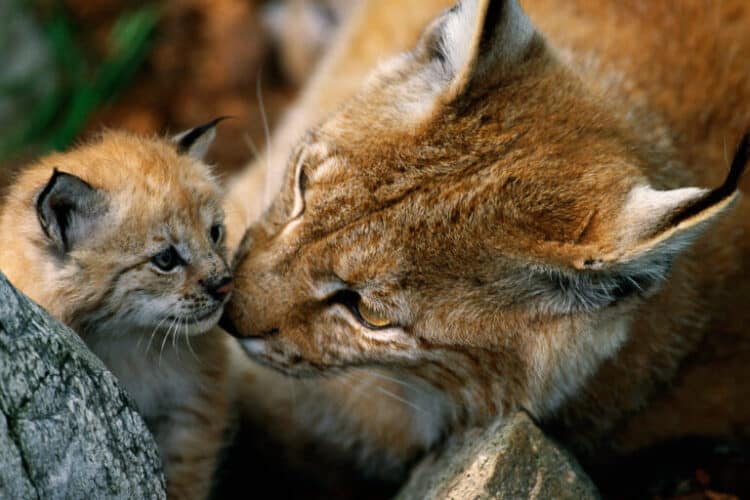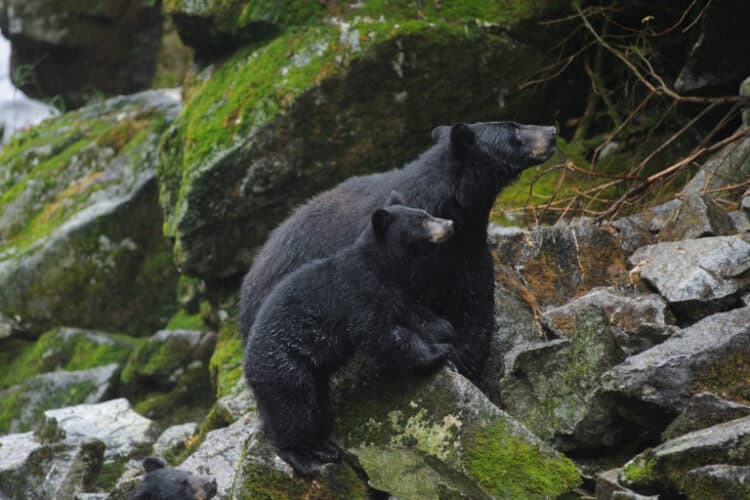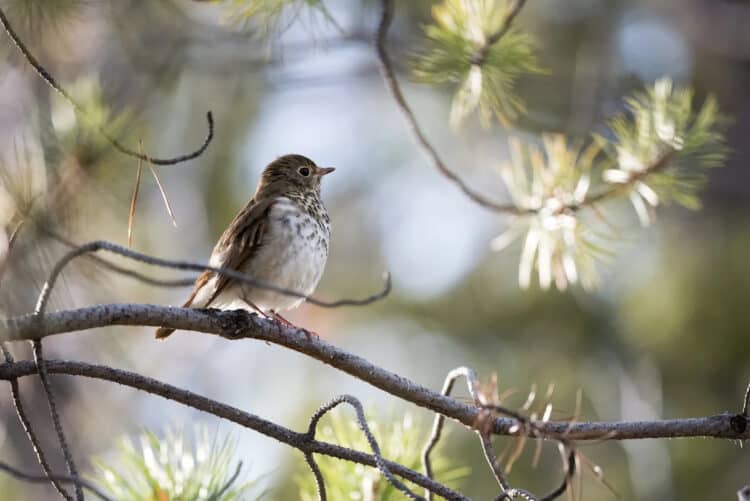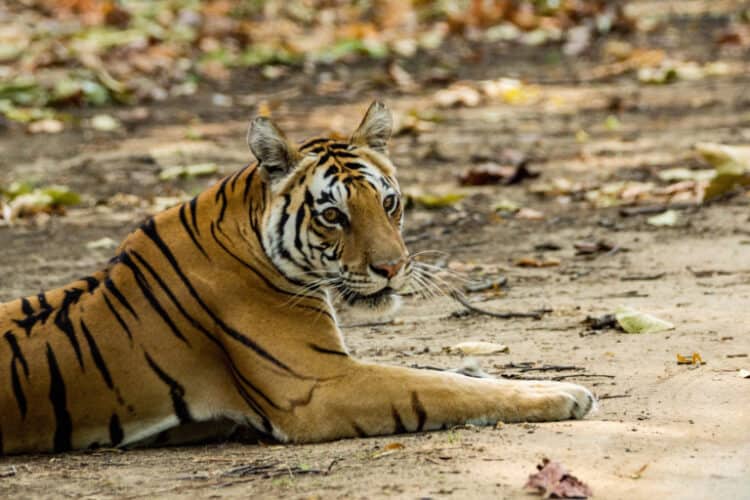This past summer, the world was gripped by the flames that tore through the Amazon rainforest and released huge volumes of trapped carbon dioxide in the process. Half a world away, far from the social media hashtags, a much smaller patch of tropical forest was revealing the secret of what makes these landscapes such potent carbon sinks: Wildlife. A teeming abundance of it.
A new paper published in Nature suggests nearly one-third of tree species in Khao Yai National Park, a reserve in central Thailand just two-and-a-half hours from Bangkok, depend on seed dispersal by large fruit-eating animals, or large-bodied frugivores (LBF). If these animals disappear — a process known as defaunation and driven by hunting and snaring — above-ground carbon stocks in these forests could go down by up to 3 percent, the study finds.

“Primates, especially gibbons, play an important role in promoting diversity of juvenile tree species in this plot,” said Wirong Chanthorn, a professor of plant ecology at Kasetsart University in Bangkok and the lead author of the study. “Thus, ‘empty forest’ due to defaunation impacts not only carbon storage but also biodiversity.”
The scientists simulated the effect of two scenarios on a 30-hectare (74-acre) study plot, a long-term study site of Forest GEO (Global Forest Observation Network): one with only primates removed, and another with all LBF species removed, including gibbons, macaques, hornbills, deer, elephants and bears.
To model each scenario, they calculated what would happen to the plot’s carbon stock if they removed individual trees of species whose seeds are dispersed by LBFs, in steps ranging from 20 percent removal up to 100 percent.
What they found was that defaunation intensity of at least 40 percent would lead to a reduction in carbon storage—measured according to the number of tree species dispersed by LBFs—of more than 1 percent; complete defaunation would diminish carbon storage by 2.4 to 3 percent.
Researchers have previously conducted similar studies in South America and Africa, but this one is the first of its kind in Asia, where it was previously believed that tree species were less dependent on LBFs for seed dispersal, and thus would not suffer as high a carbon deficit from defaunation events as the tropical forests of the Amazon or the Congo Basin.
The results, however, are comparable to those for South American forests, suggesting the carbon deficit in Southeast Asian forests wouldn’t necessarily be lower.

“On the biodiversity front, Southeast Asian forests contain huge abundances of plant and animal species found nowhere else on Earth,” said Greg Asner, director of Arizona State University’s Center for Global Discovery and Conservation Science, who was not affiliated with the study. “In terms of carbon storage, intact Southeast Asian forests store more carbon per hectare than almost any other forested region on the planet. When compared to Amazonian and Congolese forests, Southeast Asian forest biodiversity and carbon storage are in more immediate danger of collapse.”
Large-scale clearing by corporations for oil palm, pulpwood and rubber plantations, as well as slash-and-burn practices common in the region, not only destroy forest cover and biodiversity but also cause annual transboundary haze that poses detrimental health and economic impacts across the entire Southeast Asian region. In 2015, fires razed 2.6 million hectares (6.4 million acres) of land in Indonesia and caused economic losses of about $16 billion there, while the haze generated left more than half a million people with respiratory illnesses.
“Nearly everywhere [in Southeast Asia] has been selectively logged at least once, and the region has an extremely high rate of deforestation for commodities, especially oil palm,” said David Edwards, a professor of conservation science at the University of Sheffield, who was not affiliated with the study. “However, they also allow people to access forests and in doing so are opening them up to trappers engaging in wildlife trade.”
Many of the animal species in the experiment, despite being on the IUCN Red List of Threatened Species, are still common in the study plot in Thailand, thanks to its location in a protected national park. But “the region has some of the highest risks of extinction anywhere in the world,” according to Edwards, due to forest destruction and an out-of-control illegal wildlife trade.
A 2016 study found that of 301 terrestrial mammal species threatened with extinction, 113 are threatened by hunting in Southeast Asia. Some of the main drivers for hunting include the bushmeat trade, traditional medicine and ornaments, as well as the trafficking of live animals as pets.
“In recent years, anti-poaching and logging patrols are being stepped up, but are still far behind the extractors,” said Steven Galster, the international chair of Freeland, a NGO that originated in Thailand to combat wildlife trafficking. Neither Galster nor Freeland were affiliated with the recent study.
And while reforestation may be a feasible solution in restoring biodiversity and mitigating climate change, Chanthorn said finding economically viable pieces of land can be difficult. Even then, because of lax enforcement, reforestation doesn’t always equal protection.
“Too often, conservation is more conversation than anything,” Galster said. “We need to step up protection of wildlife via ranger and community patrols … We need to expand demand reduction efforts to convince consumers to stop buying tiger products, elephant ivory, rosewood, and more.”
Rosewood, often smuggled into China to make luxury furniture, can fetch up to$50,000 per cubic meter, about $1,400 per cubic foot. At one point, elephant ivory fetched up to$1,500 per pound, or $3,300 a kilogram, while a mature tiger can cost $50,000 on the black market.
“The timber and wildlife traffickers continue to win this battle because they reward poachers and loggers better than we reward rangers and other guardians of nature,” Galster said. “We need to track down the billions of U.S. dollars worth of money and assets derived from wildlife poaching and trafficking and reprogram that wealth to finance biodiversity recovery.”
But across Southeast Asia, the fight against poaching is one of overwhelming numbers. Snares, simple traps made out of wire and rope, may now be the single biggest threat to forest animals in Cambodia, Vietnam and Laos. Between 2010 and 2015, patrol teams removed more than 200,000 snares from just five protected areas in the region, according to the conservation group Wildlife Alliance. Millions of snares likely blanket Southeast Asia.
These snares, like fishing trawlers, catch not only species targeted by hunters but also those of no market value, leaving an “empty forest” with no more than a few small species. Regardless, snaring remains largely a risk-free crime, as perpetrators are rarely caught red-handed.
“People realize that forests are the lungs of the earth. But we must also be mindful that wildlife is the blood of the forest,” Galster said. “A forest without wildlife is like a lung with cancer. You have to have both to mitigate climate change.”
Citations:
Chanthorn, W., Hartig, F., Brockelman, W. Y., Srisang, W., Nathalang, A., & Santon, J. (2019). Defaunation of large-bodied frugivores reduces carbon storage in a tropical forest of Southeast Asia. Scientific Reports, 9. doi:10.1038/s41598-019-46399-y
Ripple, W. J., Abernethy, K., Betts, M. G., Chapron, G., Dirzo, R., Galetti, M., … Young, H. (2016). Bushmeat hunting and extinction risk to the world’s mammals. Royal Society Open Science, 3. doi:10.1098/rsos.160498
This article by Nanticha Ocharoenchai was first published on Mongabay.com on 18 November 2019.
What you can do
Support ‘Fighting for Wildlife’ by donating as little as $1 – It only takes a minute. Thank you.







Leave a Reply